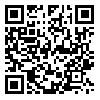Volume 13 - Education Supplement
Qom Univ Med Sci J 2019, 13 - Education Supplement: 11-22 |
Back to browse issues page
Download citation:
BibTeX | RIS | EndNote | Medlars | ProCite | Reference Manager | RefWorks
Send citation to:



BibTeX | RIS | EndNote | Medlars | ProCite | Reference Manager | RefWorks
Send citation to:
Khandan M, Koohpaei A, Heidari H, Soltanzadeh A, Khaksar S. Internal Evaluation of the Department of Occupational Health and Safety Engineering, of the School of Health in Qom University of Medical Sciences, 2018, (Iran). Qom Univ Med Sci J 2019; 13 (S1) :11-22
URL: http://journal.muq.ac.ir/article-1-2242-en.html
URL: http://journal.muq.ac.ir/article-1-2242-en.html
Mogammad Khandan1 

 , Alireza Koohpaei *
, Alireza Koohpaei * 

 2, Hamidreza Heidari1
2, Hamidreza Heidari1 

 , Ahmad Soltanzadeh1
, Ahmad Soltanzadeh1 

 , Soltanzadeh1 Khaksar1
, Soltanzadeh1 Khaksar1 




 , Alireza Koohpaei *
, Alireza Koohpaei * 

 2, Hamidreza Heidari1
2, Hamidreza Heidari1 

 , Ahmad Soltanzadeh1
, Ahmad Soltanzadeh1 

 , Soltanzadeh1 Khaksar1
, Soltanzadeh1 Khaksar1 


1- Department of Occupational Health & Safety Engineering, Faculty of Health, Qom University of Medical Sciences
2- Department of Occupational Health & Safety Engineering, Faculty of Health, Qom University of Medical Sciences ,koohpaei19@yahoo.com
2- Department of Occupational Health & Safety Engineering, Faculty of Health, Qom University of Medical Sciences ,
Abstract: (5170 Views)
Background and Objectives: Despite the quantitative growth of higher education, it had no proportional growth in terms of effectiveness, efficiency, and quality. Therefore, academic centers should monitor their performance quality, and accordingly take action for the improvement of their status and standardization. The purpose of this study was to identify strengths and weaknesses of the Department of occupational health and safety Engineering based on the data of internal evaluation in 2018.
Methods: This study was carried out as a descriptive - analytical cross - sectional study. Required information was collected from the department head, faculty members, all students, graduates, and officials and administrative personnel of the faculty using observation, interview, and valid questionnaires and checklist. There were 14 factors, 96 criteria, and 266 markers in this study. Score of 1 to 1.66 was considered as undesirable, 1.67 to 2.32 as relatively desirable, and 2.33 to 3 as desirable. The data were analyzed by descriptive and one way ANOVA tests.
Results: In this study, the overall status of the department was desirable with the score of 2.39. Eight factors were desirable and the rest were relatively desirable. Among which, mission and educational goals factor had the highest score (2.85) the library factor had the lowest score (1.95).
Conclusion: Based on the results of this study, the status of the department was evaluated as desirable. Thus, desirable total score does not mean that there is no need for sustainable development or improvement of the current conditions, and It seems that there is a need for improvement in factors, such as attempt to update the courses to meet the need of the labor market as well as standardization of educational spaces.
Methods: This study was carried out as a descriptive - analytical cross - sectional study. Required information was collected from the department head, faculty members, all students, graduates, and officials and administrative personnel of the faculty using observation, interview, and valid questionnaires and checklist. There were 14 factors, 96 criteria, and 266 markers in this study. Score of 1 to 1.66 was considered as undesirable, 1.67 to 2.32 as relatively desirable, and 2.33 to 3 as desirable. The data were analyzed by descriptive and one way ANOVA tests.
Results: In this study, the overall status of the department was desirable with the score of 2.39. Eight factors were desirable and the rest were relatively desirable. Among which, mission and educational goals factor had the highest score (2.85) the library factor had the lowest score (1.95).
Conclusion: Based on the results of this study, the status of the department was evaluated as desirable. Thus, desirable total score does not mean that there is no need for sustainable development or improvement of the current conditions, and It seems that there is a need for improvement in factors, such as attempt to update the courses to meet the need of the labor market as well as standardization of educational spaces.
Keywords: Internal-evaluation, Occupational Health, Medical Education, Sustainable Development, Quality Improvement
Type of Study: Original Article |
Subject:
علوم پایه
Received: 2018/09/16 | Accepted: 2019/02/5 | Published: 2019/02/27
Received: 2018/09/16 | Accepted: 2019/02/5 | Published: 2019/02/27
Send email to the article author
| Rights and permissions | |
 |
This work is licensed under a Creative Commons Attribution-NonCommercial 4.0 International License. |





